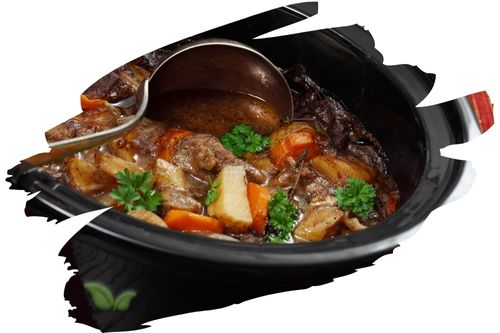
Introduction
Coriander, also known as cilantro or Chinese parsley, is an herb widely used in culinary practices across the globe. It is renowned for its distinct aroma, which adds a unique flavor to dishes. Have you ever wondered what makes coriander smell so captivating? In this article, we will delve into the science behind the aroma of coriander, exploring its chemical composition, sensory perception, culinary applications, and health benefits. Join us on this aromatic journey and unlock the secrets of coriander's fragrance.
The Chemical Composition of Coriander
Coriander owes its aroma to a rich array of chemical compounds that are present within its leaves and seeds. These compounds interact with our senses, creating the characteristic scent. Let's take a closer look at the primary chemical constituents found in coriander:
- Linalool
- Geranyl acetate
- Terpinene
- Alpha-pinene
- Beta-phellandrene
- Farnesene
Sensory Perception of Coriander's Aroma
The aroma of coriander is subjective and can elicit different perceptions among individuals. Some people find its scent delightful and refreshing, while others may describe it as soapy or unpleasant. This divergence in sensory perception is influenced by genetic factors and cultural backgrounds. The genetic variation in olfactory receptors can determine whether someone perceives the aroma of coriander as pleasant or repulsive. Studies suggest that a specific gene called OR6A2 may contribute to this divergent perception.
Culinary Applications of Coriander's Aroma
The enticing aroma of coriander has made it a staple ingredient in various cuisines worldwide. Its distinct flavor profile adds depth and complexity to dishes. Here are some popular culinary applications of coriander:
- Spice Blends: Coriander is a key component in many spice blends, such as curry powder, garam masala, and ras el hanout.
- Soups and Stews: The aroma of coriander enhances the taste of soups and stews, providing a fragrant undertone.
- Salsas and Chutneys: Coriander leaves are commonly used in salsas and chutneys to impart a fresh and vibrant aroma.
- Marinades and Dressings: Incorporating coriander into marinades and dressings adds a zesty and aromatic element to the preparation.
Unveiling the Science Behind the Aroma of Coriander
The captivating aroma of coriander can be attributed to its unique chemical composition and the interaction of these compounds with our olfactory system. The combination of linalool, geranyl acetate, terpinene, alpha-pinene, beta-phellandrene, and farnesene creates the characteristic fragrance that distinguishes coriander.
The presence of linalool contributes to the floral and citrusy notes in coriander's aroma. Geranyl acetate adds a sweet and fruity aspect, while terpinene contributes to a fresh and herbal scent. Alpha-pinene and beta-phellandrene provide pine-like and minty undertones, respectively. Farnesene, a sesquiterpene, contributes to the overall complexity of coriander's aroma.
The perception of coriander's aroma is highly individualized due to genetic variations in olfactory receptors. The OR6A2 gene plays a significant role in determining whether coriander is perceived positively or negatively. While some individuals find coriander's aroma delightful, others may detect an unpleasant soapy scent due to these genetic differences.
Frequently Asked Questions (FAQs)
Q: Can coriander's aroma vary in different coriander varieties?
Yes, coriander's aroma can vary slightly among different coriander varieties. Factors such as growing conditions, climate, and soil composition can influence the chemical composition and, consequently, the aroma of coriander.
Q: Does cooking affect the aroma of coriander?
Cooking can alter the aroma of coriander to some extent. Heat can cause some volatile compounds to evaporate, leading to subtle changes in the overall aroma. However, coriander's fragrance remains distinct and recognizable even after cooking.
Q: How can I preserve coriander's aroma in dishes?
To preserve coriander's aroma in dishes, it is best to add it towards the end of the cooking process. This helps retain its freshness and prevents the aroma from dissipating due to prolonged exposure to heat.
Q: Are there any potential allergic reactions to coriander's aroma?
While rare, some individuals may experience allergic reactions to coriander's aroma. These reactions can range from mild symptoms, such as skin rashes, to more severe ones, including respiratory issues. If you suspect an allergy, it is advisable to consult a healthcare professional.
Q: Can coriander's aroma be used in aromatherapy?
Coriander's aroma has been incorporated into aromatherapy practices for its calming and relaxing properties. It is believed to have a soothing effect on the mind and body.
Q: Are there any traditional beliefs associated with coriander's aroma?
In certain cultures, coriander's aroma is associated with good luck, love, and protection against evil spirits. It is often used in rituals, ceremonies, and even as a natural air freshener.
Conclusion
Coriander's aroma is a result of its complex chemical composition and the interplay of various compounds. Its scent can be perceived differently among individuals, influenced by genetic factors. The aromatic allure of coriander extends beyond the kitchen, offering potential health benefits and cultural significance. Whether you love it or find it soapy, coriander's aroma is undeniably fascinating. So, the next time you encounter coriander, take a moment to appreciate the science behind its captivating fragrance.
Alert: While spices can have many beneficial properties for health, using them for medical purposes should be done under the guidance and supervision of a healthcare professional or specialist. Some spices may interact with medications or cause adverse reactions in certain individuals, and it is important to use them safely and appropriately. If you are considering using spices for a medical condition, it is important to consult with a healthcare professional before doing so.




















































